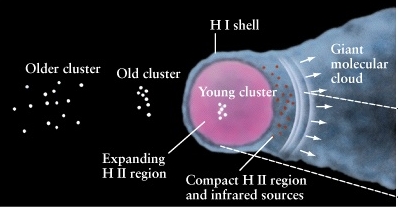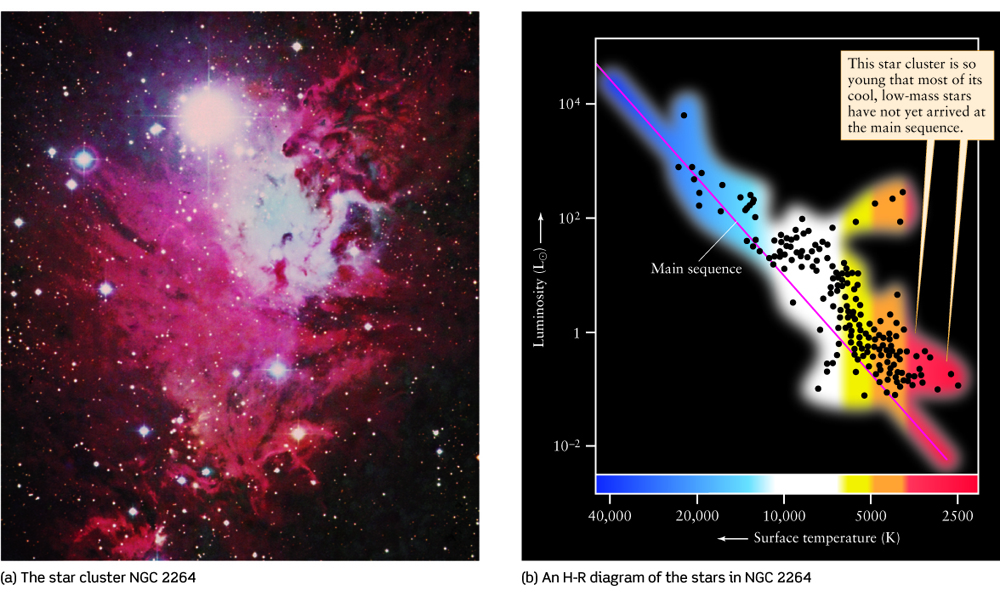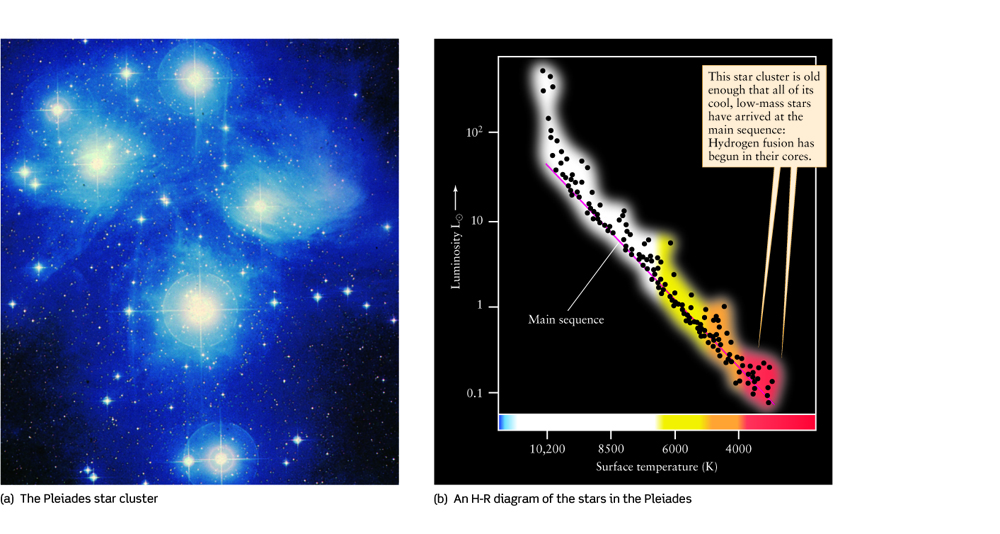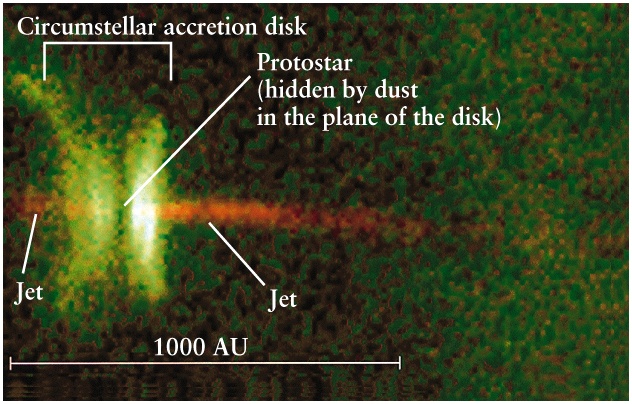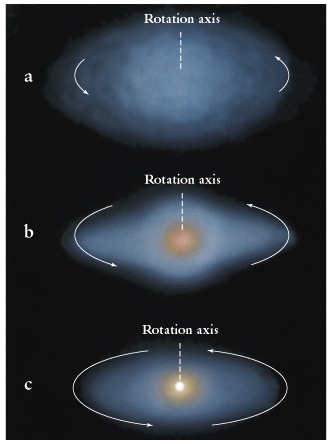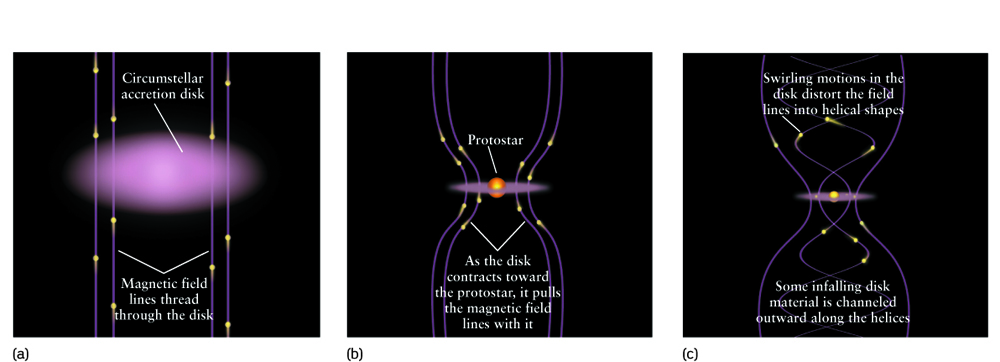- Beginning of collapse is in free-fall. But free-fall is very slow,
since the density is low. It take 10 million years for the gas to fall through
giant molecular cloud.
- Instead, heat exchange is fast in the beginning, takes 100 years to loose significant fraction of heat, because there was not much to start from !
- A collapsing cloud will tend to heat up, due to the conversion
of gravitational potential energy into thermal (kinetic) energy.
- When a gas heats up, its pressure increases and starts to
slow down the contraction. The core becomes opague
and hydrostatical balance settles. The protostar is born.
- The outer gas accretes onto the denser core colliding
abruptly and heating the inner material. It takes few thousands years to
reach surface temperature of 2000-3000 K. Then we see a protostar on
HR-diagram.
- Luminosity of protostar is large, although temperature is low,
because size is large. E.g. 1 Msun protostar has L=100 Lsun
and R=20 Rsun
- Increase heat is absorbed into breaking molecules and then ionization
of hydrogen through out the proto-star
- When the temperature is high enough that the bonds of the
hydrogen molecules are broken, it becomes easier for infrared
radiation to escape.
- The system cools again, allowing another period of
rapid collapse allowing it to get smaller and hotter.
- Center becomes hot enough for hydrogen fusion to start. The protostar
becomes main sequence star.
|
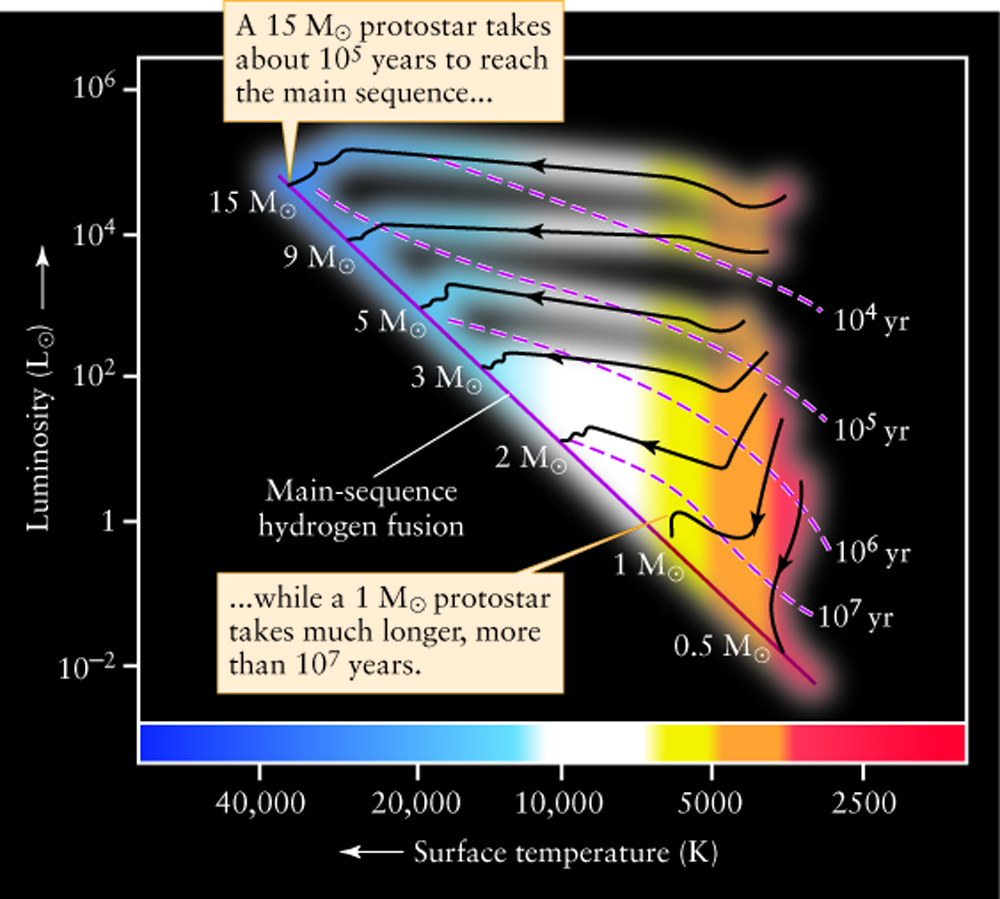
|
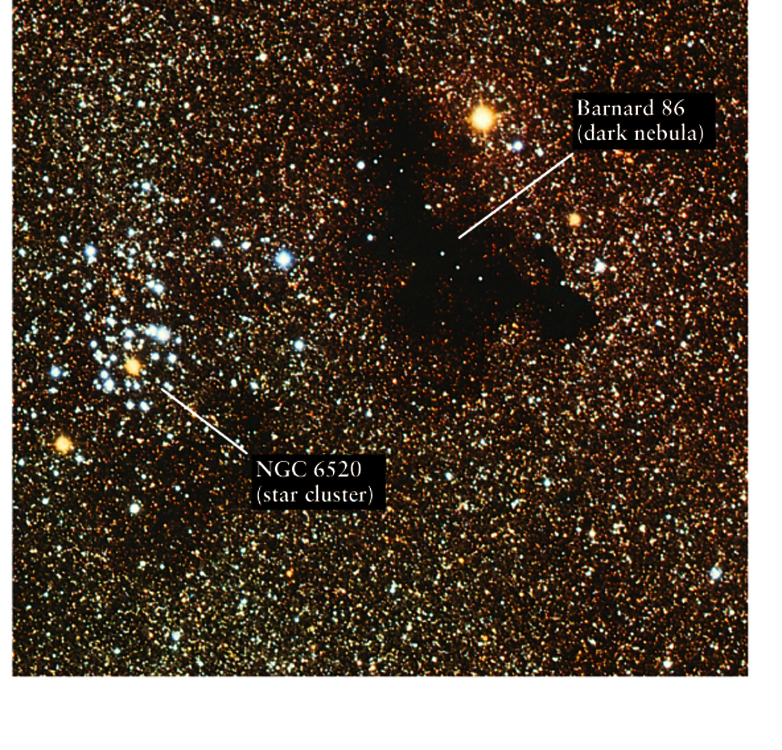
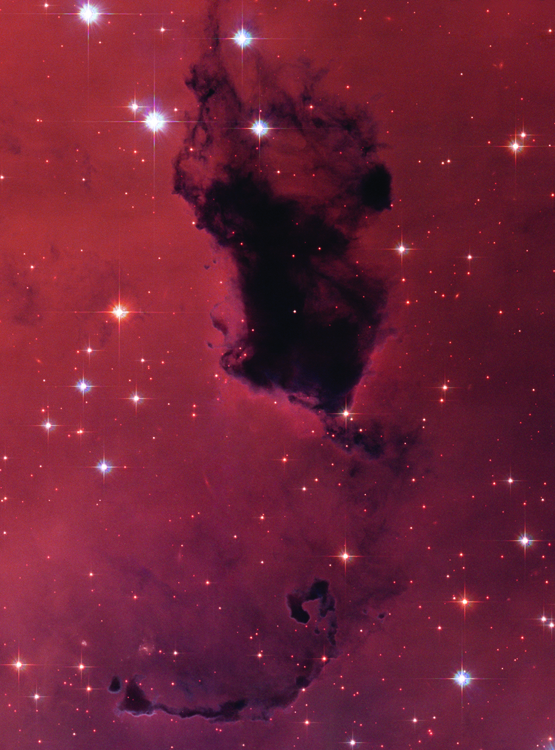
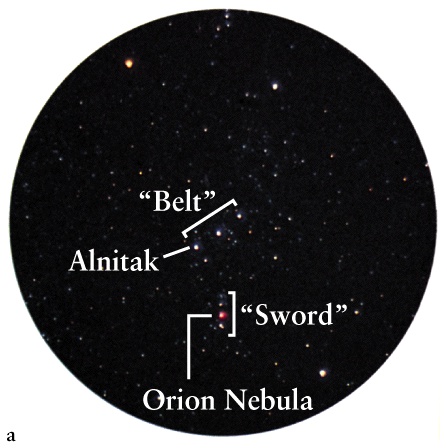
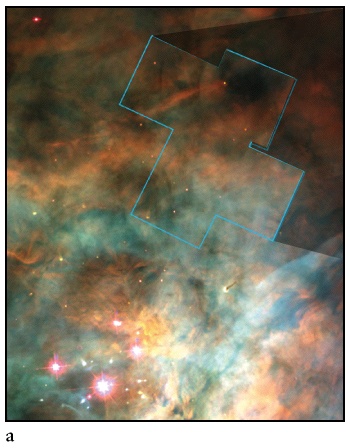
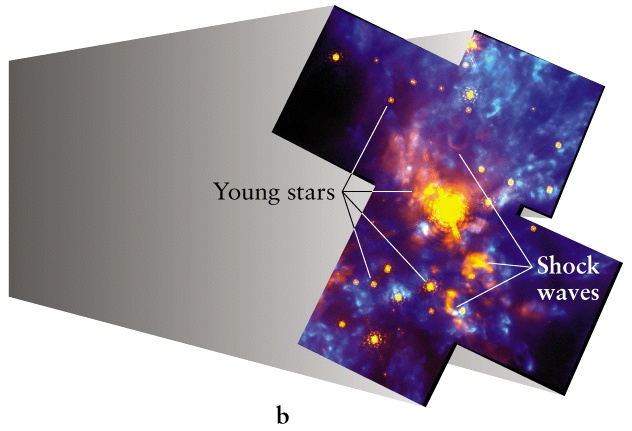
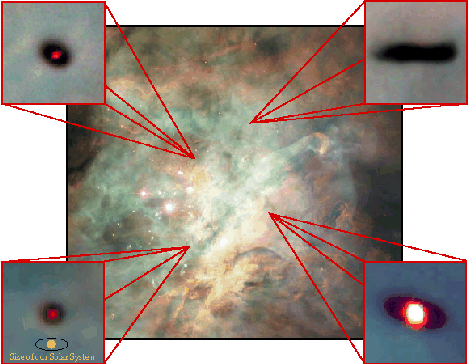
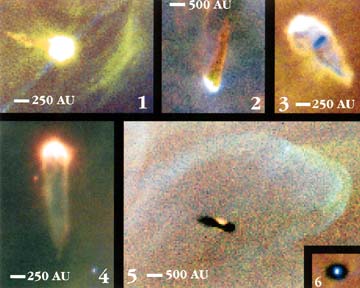
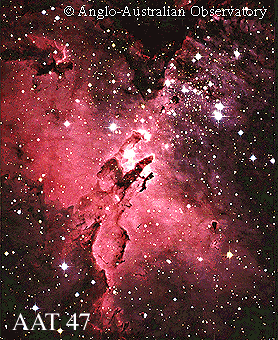
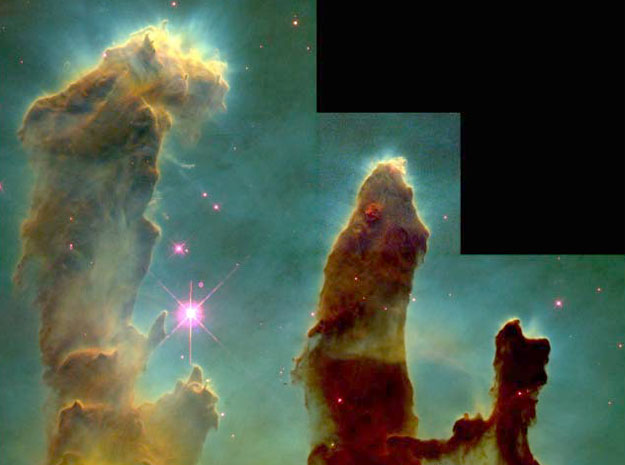
 and
thermal energy
and
thermal energy 


